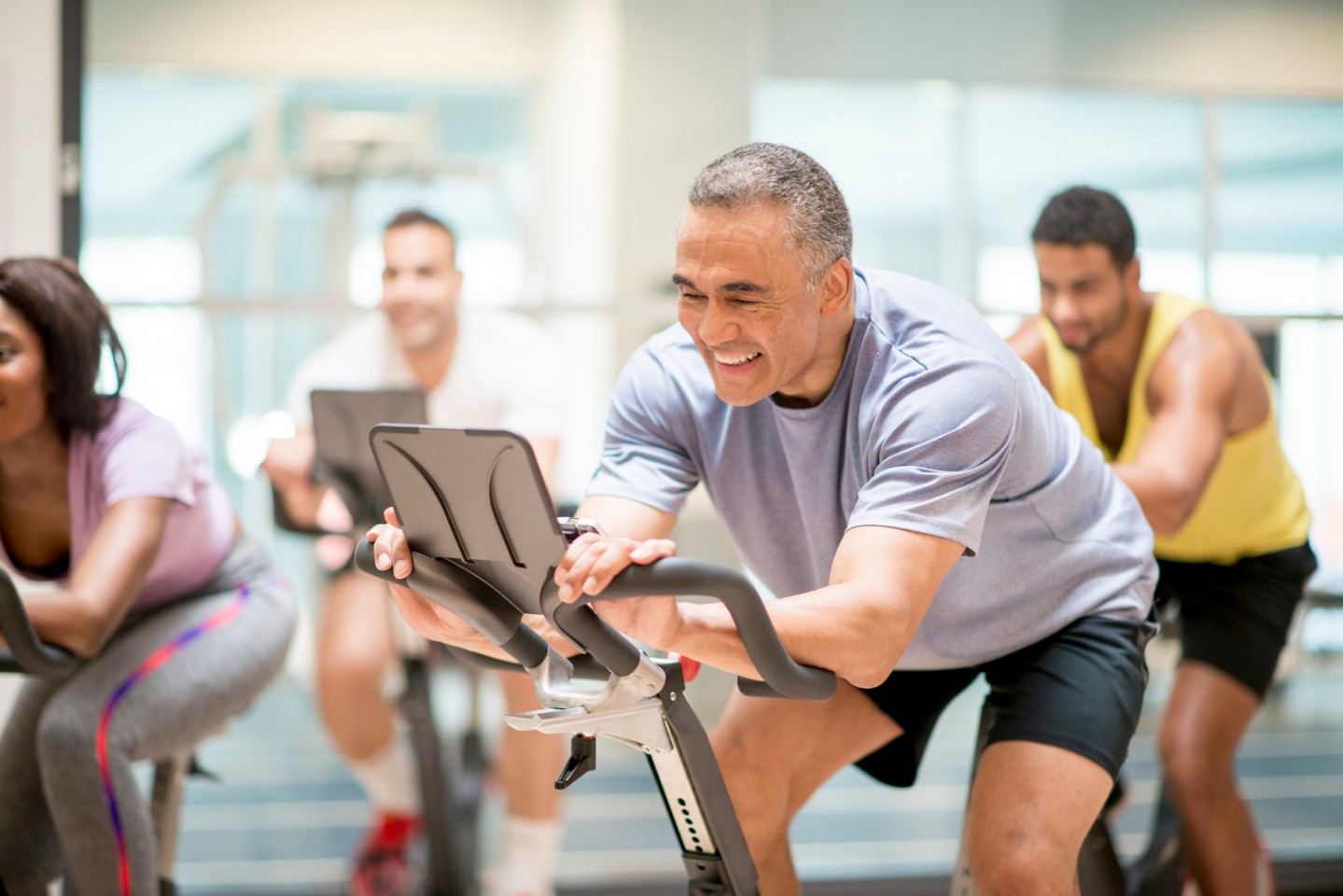We’ve enjoyed a beautiful autumn here in the Midwest. The air has been cool and dry and the skies clear and sunny. My patients who exercise outdoors repeatedly tell me how much they enjoy going for walks on pleasant afternoons and catching nine holes on the golf course. As I talk to them about their exercise habits (a conversation I try to incorporate frequently) I’ve begun asking them what sort of plans they have for exercise during the less hospitable winter months.
I learned my lesson last year. Those of you living in the Midwest will recall that we had one of the most challenging winters on record with freezing temperatures and snow that seemed to signal a return to the ice age. When spring finally arrived I found that most of my patients had gained weight, were more short of breath than ever, and felt lousy. There seemed to be a common thread among most of them: “I was doing fine with my exercise until winter came along and then everything pretty much shut down.”
I can sympathize with them. I love being outdoors and take every opportunity I can to take a run, hop on my bike, or just go for a walk. If I weren’t a doctor I’d probably be a park ranger somewhere in the mountains out west just so I could spend every day making tracks among the rocks and trees. Running has always been a form of therapy for me and I relish the cool autumn weather that’s perfect for outdoor recreation. Every day that winter creeps a little closer I get more anxious anticipating the bad weather that’s ahead. I savor each sunny day out on the road as if it will be my last for months and months.
I’ve been a runner since I was a college student in Utah. The winter months never posed much of a challenge for me even though I had to bundle up from head to toe to get out early every morning. I found that the dry air and the relative lack of wind served as a pretty good combination for outdoor exercise even when the temperature dropped well below freezing. I remember once claiming that I’d gotten so good at running in the cold that I could go for a run on the dark side of the moon.
That was before I came to Nebraska. I now know that Nebraska winters are colder, windier, and all around more miserable than any other place I’ve ever lived. Sure, the dark side of the moon gets no sunshine, but at least you won’t find any 6-foot snow drifts there. And what are a few lunar craters compared to the potholes you have to dodge on Omaha streets when running in January? Last winter was so bad that I half expected to find the remains of a woolly mammoth on my front lawn after the permafrost finally melted. What other city in the world has a zoo where they have to bring the polar bears inside for the winter? Needless to say I didn’t spend much time pounding the pavement (or black ice, as was the case).
After years of faithfully running on the darkest, coldest winter mornings I finally admitted defeat and retreated to the comfort of my warm home. I’ve outfitted my basement with a treadmill machine and television, along with a library of movies and TV shows to keep me occupied as the virtual miles click by.
But no matter how hard I work to optimize my exercise experience the fact remains that I absolutely despise running indoors. I’ve got no data from the world of physics to back me up on this, but I maintain that time ticks by more slowly when one is running on a treadmill. Miles are longer, my legs seem weaker, and I never get into the comfortable, brisk pace I’m accustomed to when running outside.
I’m telling you all this in order to emphasize the fact that I completely sympathize with my patients who spend the dark months of winter curled up on the couch watching Dancing with the Stars reruns. The problem with this is, of course, obvious: giving in to the triad of holiday eating, winter blues, and lack of regular exercise will doom you to gain pounds over the winter and lose whatever level of fitness you gained the summer before.
So what do you do?
- Join a gym. Personally, I hate going to gyms—way too much fashion and testosterone. Still, getting a gym membership forces you to budget time to commit to exercise. Try to go at least 3 times a week and focus on a good aerobic work-out. And if ever you see a skinny guy struggling with the 5 pound dumbbells, come on over and say hi to me.
- Wear a pedometer. No one can wear one of these little devices without finding himself dancing around the living room trying to achieve a new personal record. Set a goal for a certain number of steps every day and stick to it for the whole winter. You’ll walk about a mile for every 2,000 steps you take.
- Become a mall walker. Find a friend and go walking at the mall every morning. Most large malls offer early hours for exercisers and are used to crowds of fleet-footed window shoppers. CHI Health offers a walking club that meets at various malls and hospitals in the area where you can exercise, meet other people, and win prizes for cumulative miles.
- Indoor exercise equipment. Like I said, if you can bring yourself to enjoy a treadmill or elliptical then you are a sturdier soul than I. My trick as been to buy or rent a season’s worth of a serialized TV program (Madmen or 24, for example) to keep myself marginally enthused about climbing on the treadmill. Over the course of two winters I managed to plow through all 7 seasons of The West Wing (of course I now get PTSD flashbacks anytime I think of the Bartlett presidency).
- Recruit friends to the cause. Make a pact with one or two friends to keep active during the hibernation season. Check up on each other and plan activities together that will keep you motivated.
- Challenge yourself with a race. This recommendation applies more to the younger, pre-artificial-hip members of my readership. There are plenty of 5K and 10K races (or longer, if you’re in for it) in early spring. Register for one of these and then spend your winter keeping in good enough shape to be able to run it. For me it’s the knowledge that I have to survive 26 miles in April that keeps me motivated to run in January.
- Exercise around the house. One elderly patient of mine told me of how she committed to walking up and down her staircase 20 times a day. She kept at it the whole winter and was ready to go when the bulbs started to bloom. Others do calisthenics in their living room. Such resilient people will get the “I-can’t-believe-you-don’t-die-of-boredom” award from me every time.
- Get a canine exercise partner. People with dogs are generally forced to get them out for a walk at least once a day. Make sure you bundle little Rover up so he doesn’t get paw-cicles.
- Try the Wii. I’m not much of a video gamer, but I’ve had more than a few elderly patients tell me how much they love the exercise they get by playing virtual tennis or wiping out a band of marauding zombies.
- Move to Florida or Arizona, where the only way you can tell it’s winter is by the flood of snowbird RVs or the occasional falling iguana. But if you go, you have to take a cardiologist with you.
The weather may still be nice now but Jack Frost is just around the corner. Make a plan now, stick to it, and in spring you’ll be fit and ready for more pleasant times out in the warm sun.
As for me, I’m going to give the dark side of the moon a try this year—can’t be worse than Nebraska.





